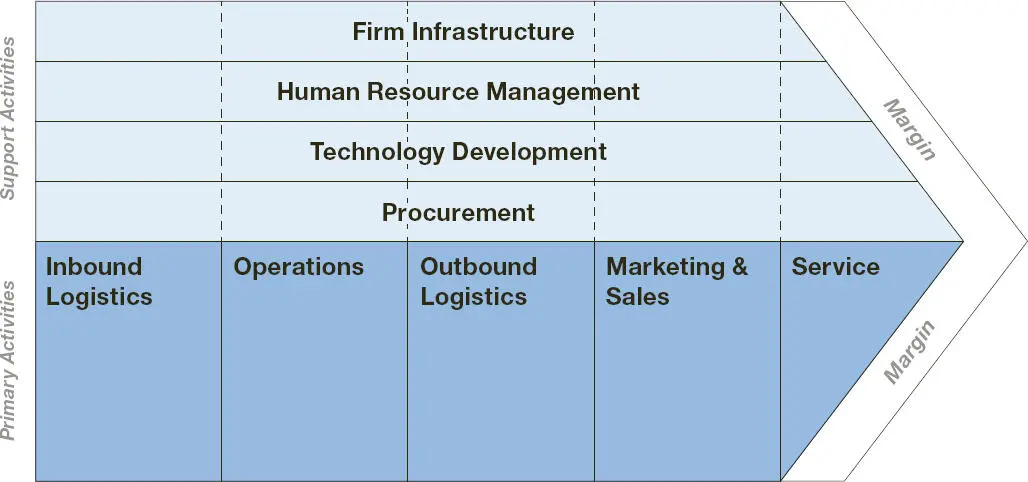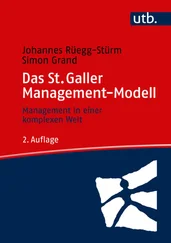Johannes Rüegg-Stürm - Managing in a Complex World
Здесь есть возможность читать онлайн «Johannes Rüegg-Stürm - Managing in a Complex World» — ознакомительный отрывок электронной книги совершенно бесплатно, а после прочтения отрывка купить полную версию. В некоторых случаях можно слушать аудио, скачать через торрент в формате fb2 и присутствует краткое содержание. Жанр: unrecognised, на немецком языке. Описание произведения, (предисловие) а так же отзывы посетителей доступны на портале библиотеки ЛибКат.
- Название:Managing in a Complex World
- Автор:
- Жанр:
- Год:неизвестен
- ISBN:нет данных
- Рейтинг книги:5 / 5. Голосов: 1
-
Избранное:Добавить в избранное
- Отзывы:
-
Ваша оценка:
- 100
- 1
- 2
- 3
- 4
- 5
Managing in a Complex World: краткое содержание, описание и аннотация
Предлагаем к чтению аннотацию, описание, краткое содержание или предисловие (зависит от того, что написал сам автор книги «Managing in a Complex World»). Если вы не нашли необходимую информацию о книге — напишите в комментариях, мы постараемся отыскать её.
Managing in a Complex World — читать онлайн ознакомительный отрывок
Ниже представлен текст книги, разбитый по страницам. Система сохранения места последней прочитанной страницы, позволяет с удобством читать онлайн бесплатно книгу «Managing in a Complex World», без необходимости каждый раз заново искать на чём Вы остановились. Поставьте закладку, и сможете в любой момент перейти на страницу, на которой закончили чтение.
Интервал:
Закладка:
• Or an orchestra: Its central value creation may lie in performing excellent concerts and going on successful tours, or in producing special recordings. Yet societal changes and digitalization are fundamentally changing the context of value creation: Concerts must reach new target groups (e.g., younger generations), tours intensify competition among orchestras (such competition is often global), the distribution of recordings is subject to new technical conditions (streaming, YouTube, etc.) and to altered economic rules of the game involving completely new business models. At the same time, orchestras need to keep offering traditional concerts and reinterpreting music for the present. These changes and the associated uncertainties must be carefully addressed by effective management practice.
• Or a hospital: Its central value creation lies in treating and healing patients. Medical and technical progress is leading to increasing specialization among doctors, nurses, therapists, etc. At the same time, technological support is growing in various areas (diagnosis, treatment, and patient data management). While medical records must now be kept electronically, patients may obtain wide-ranging information about their illnesses online. This is changing the relationship between health professionals and patients from a patronal relationship to a partnership. In addition, the growth in new treatment options, with corresponding resource requirements, substantially exceeds the financial resources flowing into healthcare through tax revenues, health insurance premiums, and self-paying patients.
As a result, not only treatment decisions are becoming more complex, but so are decisions associated with devising treatment offerings, as well as developing and efficiently using physical and technical infrastructures, medical devices, IT systems, etc. Medical or care-related knowhow alone no longer suffices to meet this challenge. What is required is effective management practice, one capable of integrating changing treatment options, associated patient expectations, and the ambitions and demands of different professions to advance innovative patient-centric value creation.
Against the background of these three examples, chapter 2explains in detail the key reference point of management: organizational value creation. Chapter 3introduces the SGMM, illustrates the purposes of management models, and explains how the SGMM came about. [21]
2 Organizational Value Creation: The Key Reference Point of Management
2.1 Value Creation as Outcome and Process
Management is not an end in itself, but always concerns organizational value creation. The term value creation refers to two distinct, yet closely related issues:
• On the one hand, value creation means the outcome of value creation, i.e., products or services (or effects in general), from which value creation addressees (e.g., customers, patients, or a concert audience) can derive a specific benefit.
• On the other, value creation means the value creation process, i.e., all activities leading to the outcome of value creation (such activities include inbound logistics, production and outgoing logistics, marketing, distribution, and customer service). Any value creation process can be greatly simplified and schematized as a “value chain” ( Figure 1).
When the SGMM speaks of value creation, we always mean both aspects, because the outcome can never be understood and designed without the process.

Figure 1: Value chain (Porter, 1985: 37) [22]
2.2 Value Creation as Organizational Achievement
When an organization or a network of organizations creates value through division of labor, we speak of organizational value creation. Precisely this organizational value creation is the key point of reference for management.
Organizational value creation refers not only to what private enterprises achieve for their customers. Depending on organizational value creation and the environmental context, other types of organizations can be distinguished (→ INT, 2.5): nonprofit organizations (e.g., a purchasing cooperative), nongovernmental organizations (e.g., the ICRC), governmental organizations (e.g., public administration, schools, railways, post offices, the police, or the army). Such types of organizations often appear in mixed forms.
Nowadays, organizational value creation mostly has four basic characteristics: (1) coordinated division of labor; (2) specialization; (3) spatial and temporal distributedness; (4) the institutionalization of reliable cooperation.
These four characteristics are closely interconnected.
• In terms of the value creation outcome, division of labor means that an end product (e.g., a car) is divided into modules, each performing specific subfunctions for overall value creation. Similarly, an insurance service can be split into specific individual tasks and modularized task bundles. In terms of the value creation process, division of labor means that overall value creation, i.e., the activities required to manufacture a product or provide a service, is divided not only among different people but also among different subprocesses or organizations, which cooperate with each other in value creation chains ( Figure 2).

Figure 2: Textile value creation chain [23]
• Division of labor, i.e., dividing overall value creation into subtasks, subprocesses and subfunctions, has one major advantage: It enables specialization, i.e., developing and applying specialized knowledge and skills. A task is not only distributed identically among a large number of actors. These actors, whether individuals, communities or organizations, may and must consciously endeavor to specialize. While the involved actors now only master specific individual activities of overall value creation, their in-depth competence and experience means they excel at their task.
Actor specialization often coincides with specializing the overall resource configuration. By resource configuration, we mean all the prerequisites that are available over time and whose interplay leads to developing, producing, and providing specific products and services. Such preconditions include financial resources, physical and technological infrastructures, location conditions, knowledge and know-how, permits or rights (e.g., licenses).
• Another characteristic of organizational value creation, in its intra- and interorganizational division of labor and specialization, is its spatial and temporal distributedness. Thus, different value creation activities are distributed sequentially or in parallel, staggered over time, and performed in various places (e.g., locations, buildings, rooms).
• Labor-division-based value creation depends on reliable, well-functioning collaboration. Enduring, robust, and goal-oriented collaboration needs to be institutionalized within an organization. By institutionalization, we mean developing a certain, lastingly stable, and person-independent practice (e.g., in a democracy, popular votes and electing members of parliament). Repeated enforcement makes such practices collectively self-evident. They can be based on both implicit rules and formalized regulations (→ TRA, 2.1and 3.1).
Thus, institutionalizing labor-division-based collaboration enables this cooperation to be practiced as independently as possible of specific individuals. To this end, organizations serve as structured spaces of action for lastingly stabilizing labor-division-based cooperation (Barnard, 1938).
Читать дальшеИнтервал:
Закладка:
Похожие книги на «Managing in a Complex World»
Представляем Вашему вниманию похожие книги на «Managing in a Complex World» списком для выбора. Мы отобрали схожую по названию и смыслу литературу в надежде предоставить читателям больше вариантов отыскать новые, интересные, ещё непрочитанные произведения.
Обсуждение, отзывы о книге «Managing in a Complex World» и просто собственные мнения читателей. Оставьте ваши комментарии, напишите, что Вы думаете о произведении, его смысле или главных героях. Укажите что конкретно понравилось, а что нет, и почему Вы так считаете.










